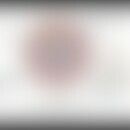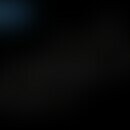DefinitionThis section has been translated automatically.
Biliary colic is a suddenly triggered, constant, persistent pain that results from cholelithiasis triggered obstruction or inflammation of the bile ducts and may last from 30 min to 5 h. The pain may be gradual or rapid as soon as the stone either falls through the choledochal duct into the duodenum or through the cystic duct into the gallbladder. The pain then subsides gradually or rapidly (Kasper 2015) as the stone either falls through the choledochal duct into the duodenum or falls back through the cystic duct into the gallbladder (Sigman 2023).
ClassificationThis section has been translated automatically.
Both cholesterol-containing and bilirubin-containing gallstones can trigger colic (Sigman 2023). In biliary colic, a distinction is made between mild and severe colic (Herold 2022).
You might also be interested in
Occurrence/EpidemiologyThis section has been translated automatically.
It is estimated that approximately 10-20% of all adults have cholelithiasis, of which 1-3% are symptomatic. Biliary colic occurs preferentially in women because estrogen promotes the formation of gallstones (Sigman 2023).
Biliary colic is one of the 10 most common diagnoses of emergency medical services (Standl 2010).
EtiopathogenesisThis section has been translated automatically.
Stones formed primarily in the gallbladder as well as those formed primarily in the choledochal duct (so-called CBDs) can trigger biliary colic (Sigman 2023).
It is most commonly triggered by a fatty meal or the consumption of a larger meal after a period of fasting (Kasper 2015), as both trigger contractions of the gallbladder to move bile into the duodenum (Sigman 2023). This can result in stone passage or stone entrapment in the region of the cystic duct, papilla Vateri (Herold 2022), or choledochal duct in patients with pre-existing gallstones (Sigman 2023).
Biliary colic occurs preferentially at night (Kasper 2015).
Biliary colic is differentiated between calcific and acalculous causes.
Calculous causes include:
- gallstone ileus
- acute cholecystitis
- prepapillary calculus in the choledochal duct
- Bouveret's syndrome (gallstone ileus with obstruction of the duodenal bulb leads to gastric outlet stenosis).
- gallbladder sludge
- Mirizzi syndrome (a concrement in the cystic duct or a cholecystocholedochal fistula leads to compression of the hepatic duct (Standl 2010))
Acalculous colic can be caused by:
- Biliary tract anomalies
- dyskinesia of the gallbladder
- biliary infection
- biliary tract anomalies (Standl 2010)
PathophysiologyThis section has been translated automatically.
During digestion of food, the release of cholecystokinin (CCK) from the duodenum leads to contraction of the gallbladder. In pre-existing cholelithiasis, the stones (Sigman 2023) can lead to obstruction of the cystic duct or choledochal duct during contraction (Kasper 2015). Particularly small calculi between 4 - 6 mm are potentially ablative (Krombach 2015).
This causes visceral, severe and persistent pain with radiation to the right scapula due to the increase in intraluminal pressure with distension of the colon (Kasper 2015). The radiation into the right shoulder or back (so-called Head's zones) results from afferent nerve fibers from the area of the right scapula crossing with afferent pain fibers from the biliary system in the area of the spinal posterior horn (Standl 2010).
ClinicThis section has been translated automatically.
A sudden stretching of the biliary tree results in a steady pain. Therefore, the term "colic" is misleading (Kasper 2015).
Acute gallbladder distension usually causes pain in the right upper quadrant with radiation to the tip of the right scapula (Kasper 2015). However, there is no clearly typical localization in biliary colic (Gutt 2018).
Other symptoms may include:
- Nausea
- Vomiting (Kasper 2015).
Complications are indicated by the following symptoms:
- Fever
- Chills (Kasper 2015)
DiagnosticsThis section has been translated automatically.
- Physical examination:
Patients usually have a pain on palpation in the right upper abdomen.
ImagingThis section has been translated automatically.
Abdominal sonography
In sonography can be typically detectable:
- Detection of stones by:
- Positional displacement when the patient is repositioned
- visualization of the stones in 2 planes
- arched anechoic reflux with posterior sonic triggering (Krombach 2015) so-called stone or sonic shadow (Sigman 2023).
Only small calculi may lack the sonic shadow (Krombach 2015).
Complications such as acute cholecystitis are indicated by:
- pericholecystic fluid
- thickening of the wall (> 0.4 cm)
- Change in size of the gallbladder (Sigman 2023).
Abdominal overview
Only about 20% of cholesterol stones are calcified and thus radiopaque. Of the black pigment stones, approximately 75% are calcified. Brown pigment stones are not calcified (Krombach 2015).
Abdominal CT.
CT is not as useful as sonography for evaluating lithiasis of the bile ducts. However, CT is usually performed to evaluate an acute abdomen (Sigman 2023).
HIDA- Scan
A HIDA- scan is particularly useful in differentiating acute or chronic cholecystitis and in biliary dyskinesia (Sigman 2023).
MRCP
This examination is particularly useful for visualizing the biliary tree and plays a role in the diagnosis of cholelithiasis (Sigman 2023).
ERCP
If other imaging techniques do not show a clear picture, further evidence can be found by ERCP. In addition, ERCP is used to treat choledocholithiasis (Sigman 2023).
LaboratoryThis section has been translated automatically.
The following laboratory values should be determined:
- complete blood count (this allows early detection of serious complications)
- direct bilirubin
- AST
- ALT
- ALP
- GGT (Sigman 2023)
- alkaline phosphatase (Kasper 2015)
Differential diagnosisThis section has been translated automatically.
- gastroduodenal ulcers
- myocardial infarction (Herold 2022)
- Acute cholecystitis with a pain event lasting longer than 5 h (Kasper 2015)
- mesenteric ischemia
- biliary dyskinesia
- cholangitis
- viral or bacterial gastroenteritis (Sigman 2023)
Complication(s)(associated diseasesThis section has been translated automatically.
Risk factors for possible complications include:
- elderly patients
- obesity
- recent weight loss
- gravidity
- Northern European ancestry
- Z. n. liver transplantation (Sigman 2023).
The main complications are:
- Cholangitis (Kasper 2015)
- Perforation of the gallbladder (Sigman 2023).
General therapyThis section has been translated automatically.
Treatment of biliary colic is partly symptomatic and partly causal. It may consist primarily of:
- Food restriction
This should be maintained for at least 24 h (to inhibit motility of the bile ducts [Gutt 2018]). The subsequent diet should not contain fatty or fried foods (Herold 2022).
- Spasmolytics
Symptomatic therapy includes administration of a spasmolytic - such as butylscopolamine i. v. (contraindications: e.g., bladder emptying disorders, glaucoma) or nitroglycerin sublingually 0.8 mg or 2 strokes (contraindication: PDE- 5 inhibitors such as sildenafil, vardenafil, tadalafil [Michel 2016])
(Herold 2022 / Gutt 2018 / Standl 2010)
Analgesic therapy depends on the stage of colic:
Mild colic:
- NSAID e.g. diclofenac 75 mg i. m. or indometacin 75 mg i. v. or 2 x / d 75 mg as suppository.
- Metamizole 1 g i. v. (Standl 2010).
However, metamizole is no longer used in some countries because of the risk of agranulocytosis (Herold 2022).
Severe colic:
plus
Dosage recommendation: pethidine 50 mg i. v. plus butylscopolamine 20 mg i. v. (Herold 2022).
Antibiotics are not a form of treatment for biliary colic, although they are for complications caused by gallstones (Sigman 2023).
If the v. a. is a bacterial infection of the bile ducts as is the case with cholangitis or cholecystitis, E. coli and enterococci are most commonly found as causative agents.
In this case, ceftriaxone plus metronidazole or alternatively ampicillin plus sulbactam is recommended for mild cholangitis. In a severe course of cholangitis, piperacillin plus tazobactam or carbapenems are indicated (Herold 2022).
- Surgical measures
The therapy of biliary colic is primarily carried out by surgical measures. They represent the actual causal therapy. Surgical measures may well be performed electively if the symptoms decrease under the above-mentioned measures (Sigman 2023).
S. a. w. u. "Surgical therapy"
- Shock wave lithotripsy
Extracorporeal shock wave lithotripsy can be performed in patients poorly suited for surgical measures, but the risk of recurrence is very high (Sigman 2023).
Operative therapieThis section has been translated automatically.
The gold standard for the treatment of biliary colic is laparoscopic cholecystectomy. Nowadays, open cholecystectomy is performed only in exceptional cases (Sigman 2023).
If the pain symptoms improve with the above-mentioned (medicinal) therapy, an elective cholecystectomy can be attempted (Standl 2010).
If the colic is caused by cholecystitis, early elective laparoscopic cholecystectomy is indicated within 24 h (Herold 2022).
Progression/forecastThis section has been translated automatically.
In cases of biliary colic, cholecystectomy is predominantly elective. The postoperative course is usually uncomplicated. The recurrence rate for gallstones is high (Sigman 2023).
LiteratureThis section has been translated automatically.
- Gutt C, Jenssen C, Barreiros A P, Götze T O, Stokes C S, Jansen P L, Neubrand nM, Lammert F (2018) Updated S3 guideline of the German Society of Gastroenterology, Digestive and Metabolic Diseases (DGVS) and the German Society of General and Visceral Surgery (DGAV) on prevention, diagnosis and treatment of gallstones. AWMF-Register- No. 021 / 008
- Herold G et al (2022) Internal Medicine. Herold Publishers 365, 367
- Kasper D L, Fauci A S, Hauser S L, Longo D L, Jameson J L, Loscalzo J et al (2015) Harrison's Principles of Internal Medicine. Mc Graw Hill Education 98, 103, 2079 - 2080, 2083.
- Krombach G A, Mahnken A H (2015) Radiologic diagnosis of abdomen and thorax: III Abdomen ). Gall bladder and bile ducts. Georg Thieme Verlag Stuttgart 441 - 442
- Michel M S, Thüroff J, Janetschek G, Wirth M (2016) Urology. Springer Verlag Berlin / Heidelberg 1517
- Sigman D F, Dayal N, Meseeha M (2023) Biliary Colic. Treasure Island (FL) StatPearls Publishing DOI: https://www.ncbi.nlm.nih.gov/books/NBK430772/
- Standl T, Schulte am Esch J, Treede R D, Schäfer M, Bardenbeuer H J (2010) Pain therapy: acute pain - chronic pain - palliative care. Georg Thieme Verlag Stuttgart 246 - 247
Incoming links (1)
Gastritis, erosive;Outgoing links (30)
Acute hepatitis; Acute pancreatitis; Alkaline phosphatase; Ampicillin; Analgesics; Antibiotics (overview); Bilirubin; Butylscopolamine; Carbapenems; Ceftriaxone; ... Show allDisclaimer
Please ask your physician for a reliable diagnosis. This website is only meant as a reference.




